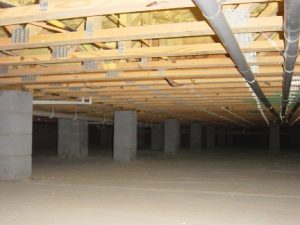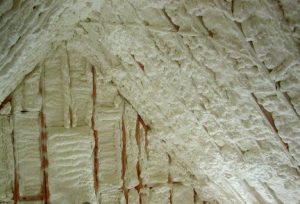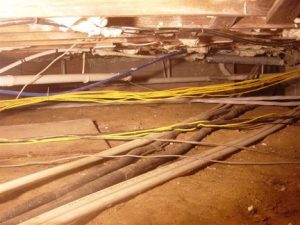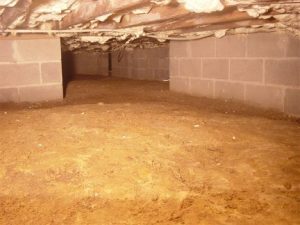02 Sep October 2010
Willis Sinclair Homes
“The Lowcountry’s Premier Custom Home Builder”
Personalized Full-Service Construction
Fixed Price and Cost Plus Contracts

A crawlspace with a concrete ‘dust cap’ under a Willis Sinclair Homes built home.
24 Gabriel Road
Lodge, South Carolina 29082
843 846 2500

October 2010
Thanksgiving…
Thanksgiving is here again and we have more to be thankful for than ever. We have made it through another year even though it was another hard one for many of us financially. But if there is one thing that a bad economy does it is make us aware of the good things that still remain for us to be thankful for. Those things include our good health, our family, our friends, our country and our God.
We at Willis Sinclair Homes want to especially thank all of our clients who chose us to service their needs. If you are one of our clients,
Thank you very much. We really appreciate the trust you have placed in us and we will always do our very best to serve your needs.
Whenever you want a new home built, want to add onto or remodel your current home or simply need complete home care and management, call us and we will be glad to help you. Homes are what we do.
We, at Willis Sinclair Homes, would like to wish you and your family a
Very
Happy
Thanksgiving
Holiday.

From the desk
of Willis Ponds …
Attics and crawlspaces are often forgotten places in your home. They are important, however, and require attention.
As we work around existing homes in the Lowcountry, we often see crawlspaces with many issues. One common issue is that plastic is not on the ground, thus allowing moisture from the ground to cause high humidity under the house. Of course, this leads to mold, mildew and even rot.
For air conditioners and duct work in the crawlspace moisture is really bad news. This moisture leads to reduced efficiency and a shorter life of the system.
Many crawlspaces are not designed or built to keep rodents from under your home. Rodents love to chew insulation from wires, HVAC ducts, refrigerant lines and other things. This also causes many problems.
Of course, the best solution is to have solid walls for the foundation and a concrete ‘dust cap’ under your home. For new homes, that is a good option. For existing homes, other techniques must be used.
Call us if you want to save energy dollars that may be wasted in your attic or crawlspace. We will inspect your home and give you solid recommendations at no charge to you.
Willis
President, Willis Sinclair, Inc.
843 846 2500
Attics and Crawlspaces
When your home is designed and built, your attention is normally focused on the living areas. This includes what is called the “heated” space, the porches and garage.
There are two more areas which deserve some attention, however: attics and crawlspaces.
Attics
The space between the living areas and roof is the attic. Traditionally, the attic is not conditioned space. Insulation is placed between the attic and living areas. The attic gets very hot in the summer and cold in the winter.
Conditioned attics have spray in foam insulation installed between the rafters of the roof. There is no insulation between the attic and living space: none is needed. Conditioned attics are typically only a few degrees different than the temperature of the conditioned living space.
Unconditioned attics can be a problem for several reasons. If your HVAC system or ducting is in the attic, heat loss will be significantly higher than in a conditioned attic.
Typically a conditioned attic is only about 10 degrees different than the conditioned space. During the summer months, unconditioned attics can get up to 130 degrees, a 50-60 degree difference.
Heat loss through ducting is a function of the temperature difference inside the duct and outside the duct. In a conditioned attic, the difference may be 40 degrees (80 degree attic and 40 degree air in the duct).
In an unconditioned attic, the difference might be 90 degrees (130 degrees in the attic and 40 degrees in the duct) resulting in over twice the heat loss through duct losses and losses in the air handler as well. Extra losses translate not only to higher power bills, but extra load on and shorter life of your system.
If conditioned attics are so much better than unconditioned attics, why do builders still build unconditioned attics? Many builders are resistant to change or just don’t trust new technologies. The main reason though is that they don’t believe the extra cost is worth it. They haven’t done the research we have to prove its performance.

A conditioned attic.
In a new home, a conditioned attic is relatively easy to make: simply use spray foam insulation between the rafters directly on the bottom side of the roof sheathing. Spray foam is more expensive than fiberglass, but figured over the total cost of the house, the increment is very small and your payback is only a few years. On older homes, often, much of the attic can be conditioned. This is something homeowners should strongly consider for both comfort and energy savings.
Since fiberglass insulation is less expensive can it be used to condition attics? Unfortunately, the answer is no, fiberglass insulation against the roof sheathing is not a good idea. Because fiberglass is not a good air barrier you still have to vent your attic. Once you add vents in your attic you have defeated the sealed attic. If you don’t add vents you will have a bad humidity problem. Fiberglass can work good in a sealed cavity like walls but it is not good for sealing attics.
If your HVAC system is not in the attic, you should still consider conditioning your attic. If you are using your attic for storage, temperatures which are close to the conditioned temperature of your home are much more friendly to your stored items.
Crawlspace
The crawlspace, all too often, becomes a large trash can for sloppy builders. If a crawlspace is left dirty by the builder then anyone coming behind him will be tempted to also do substandard work.

A Very Sloppy Crawlspace
Not only does a sloppy crawlspace look bad, but when rodents (rats, mice, squirrels, etc.) get under your home, they will chew on any wires they can easily get to. Notice also, in the photo there is no plastic on the ground so any ground dampness will lead to high humidity under the home. Humidity leads to mold, mildew and even rot – all very bad things.
Wires, pipes and refrigerant (HVAC) lines should be suspended from the floor joists and kept off the ground.

What The Crawlspace Should Look Like Before Plastic Is Laid Down.
These two photos show a before and after under the same house. We took a dumpster full of debris from under the house and, with the help of electricians and HVAC technicians, got all of the wires and lines off the ground.
We will be happy to look at your home and offer suggestions for conditioning your attic and cleaning up your crawlspace. Call us. We can help.
Willis Sinclair Homes, where ‘Built Right’ is the only ‘good enough’ we understand.

Call 843 846 2500





No Comments